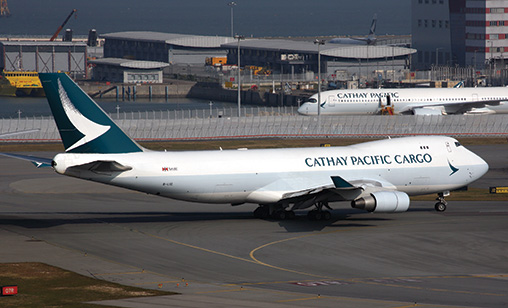Air Cargo
Toll of the trade war
February 1st 2019
There is little doubt that the China-U.S. trade impasse is the major reason for uncertainty in the air cargo sector as China is the major driver of air cargo growth and not only in the Asia-Pacific. Read More »
Last month, it was revealed exports in December from China suffered their biggest fall in two years, by 4.4%, and imports also contracted, figures that pointed to a growing weakness in the world’s second largest economy.
 |
Demand in most of China’s major markets is weakening. Imports dropped 7.6%, their biggest decline since July 2016. Analysts had expected export growth to slow to 3% and imports to increase by 5%. Data also showed China posted its biggest trade surplus with the U.S. on record last year, which has prompted fears U.S. President Trump could use the negative data to increase the heat in their tariff talks.
For airlines, it is slowing demand in the electronics sector that is most worrying.
ANZ Bank chief economist, Raymond Leung, wrote last month that “a trade recession is likely, in our view” and predicted a period of export contraction similar to 2015- 2016.
“The global electronics cycle remains the key driver of Chinese exports. A potential downturn in the sector poses the real risk to China’s external outlook even if China and the U.S. reach a resolution in their trade dispute.”
ING said a fall in electronic shipments could be related to foreign companies avoiding incorporation of China-made electronic components in their products and also predicted exports and imports of electronic parts and goods would likely shrink this year. Sales of products from iPhones to cars are falling off. Apple has warned of declining demand for its iconic phones and has announced sweeping job cuts because of reduced demand.
Analysts said the dismal December trade readings suggest China’s economy has cooled faster than expected, despite Beijing’s introduction of several expansionary measures in recent months that have included expanded infrastructure spending and tax cuts.
Some analysts believed China will have to speed up and intensify its policy easing and stimulus measures after factory activity shrank in December. “Today’s data reflect an end to export front-loading and the start of payback effects, while the global slowdown could also weigh on China’s exports,” Nomura economists wrote in a note.
It said there was a surge of shipments to the U.S. over much of last year as companies rushed to beat further tariffs. “The export growth print also suggested the recent strength of the yuan might be short-lived; Beijing will perhaps be more eager to strike a trade deal with the U.S. and that policymakers will need to take more aggressive measures to stabilize GDP growth,” Nomura said.